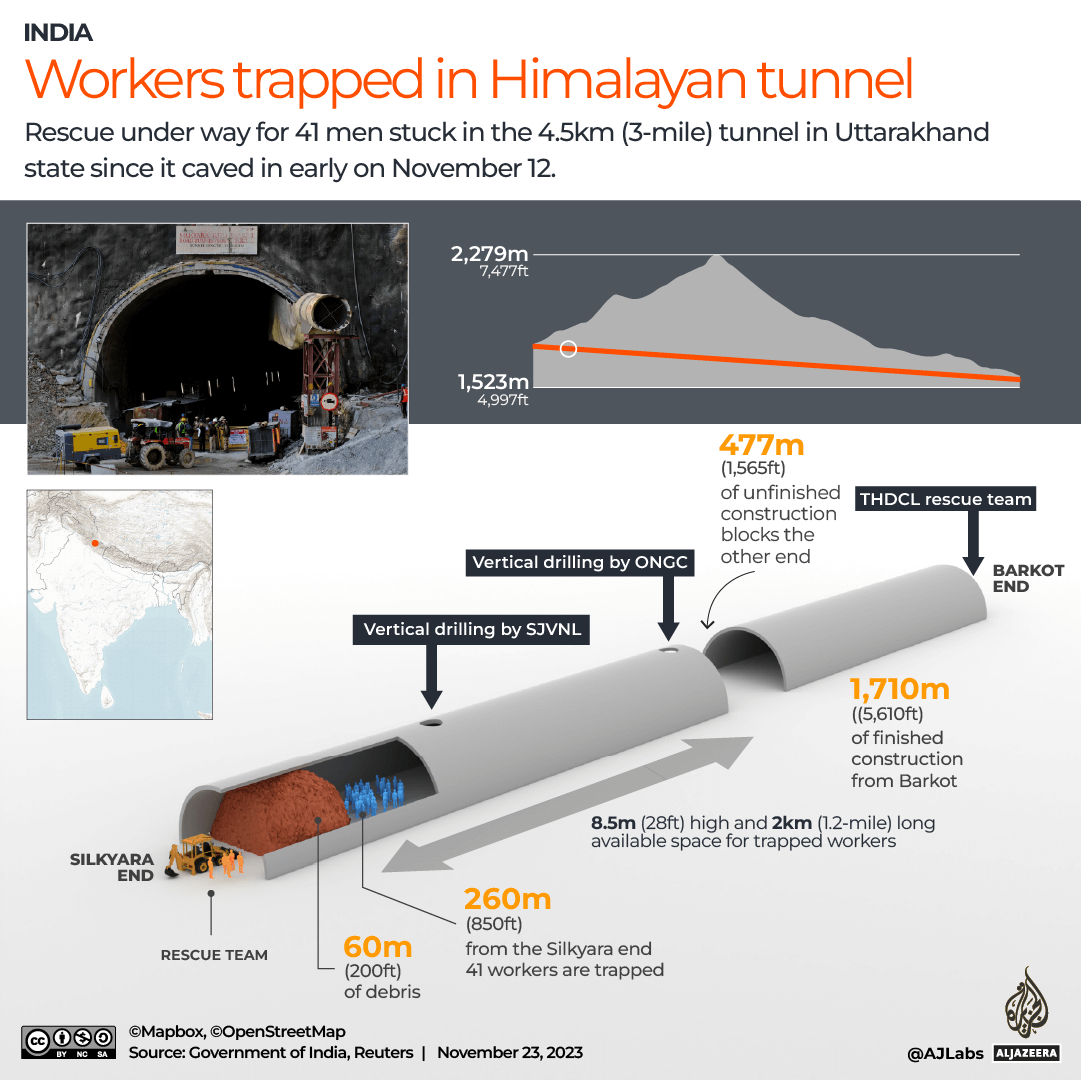
All 41 construction workers who were trapped in a collapsed mountain tunnel for 17 days in northern India have been brought to safety, hours after rescue crew drilled through the debris of rock, concrete and mud to reach them.
Following days of multiple rescue attempts that hit obstacles just metres from reaching the men, they were eventually pulled out on Tuesday on wheeled stretchers through a 90-centimetre (three-foot) wide steel pipe, in the Himalayan state of Uttarakhand.
The final phase of the delicate operation was completed in about an hour.
The labourers, low-wage workers from some of India’s poorest states, had been stuck in the 4.5-km (three-mile) tunnel being built in Uttarakhand since it caved in early on November 12. The intricate and painstaking efforts to get them out had been closely watched across the country for days.
Chief Minister Pushkar Singh Dhami, the state’s top elected official, met some of the workers before they were taken to hospital, presenting them with traditional marigold garlands. Ambulances and helicopters were on standby at the entrance of the tunnel.
Officials at the site, where sweets were being distributed and firecrackers were set off in celebration, said the workers appeared to be in good health.

One of the rescuers, Devender, who only gave his first name, told the New Delhi Television channel, “The trapped workers were overjoyed when they spotted us in the tunnel. Some rushed toward me and hugged me.”
Another rescuer called Vakil said: “We had decided that we would work 24/7 and not leave until we bring all of them out.”
I am completely relieved and happy as 41 trapped laborers in the Silkyara Tunnel Collapse have been successfully rescued.
This was a well-coordinated effort by multiple agencies, marking one of the most significant rescue operations in recent years. Various departments and…
— Nitin Gadkari (@nitin_gadkari) November 28, 2023
“I am completely relieved and happy as 41 trapped labourers in the Silkyara tunnel collapse have been successfully rescued,” Minister of Road Transport Nitin Gadkari said in a statement. “This was a well-coordinated effort by multiple agencies marking one of the most significant rescue operations in recent years.”
Military engineers finally had to use a so-called “rat-hole mining” technique, digging by hand to clear the rocks and rubble over the remaining nine metres (29 feet), with temperatures plummeting in the remote mountain location.
Authorities had said the men were safe underground, with access to light, water and medicines through a pipe. While they were being supplied with hot meals through a 15cm (six-inch) pipe after days of surviving only on dry food, they were getting oxygen through a separate pipe.
Arnold Dix, president of the International Tunnelling and Underground Space Association, who had been advising the rescue crew, told reporters that the workers were in positive spirits, and he heard they’d been “playing cricket” while trapped.
The tunnel is part of the $1.5-bn Char Dham highway, one of Prime Minister Narendra Modi’s ambitious projects that aims to connect four Hindu pilgrimage sites through an 890-km (550-mile) network of roads.
Some experts have said the project will exacerbate the fragile conditions in the upper Himalayas where several towns are built atop landslide debris.
While officials have not said what caused the tunnel collapse, the region is prone to landslides, earthquakes and floods.
The government has said that it employed environmentally sound techniques to make geologically unstable stretches safer. It also ordered the National Highways Authority of India to audit 29 tunnels being built across India.







